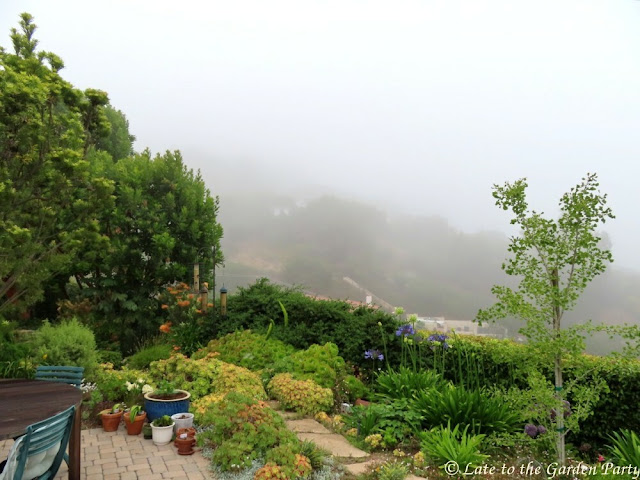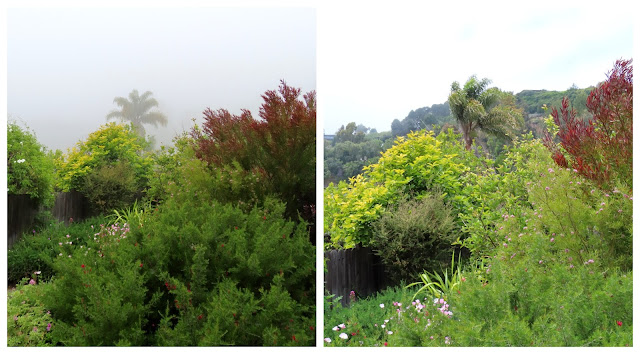The title of this post isn't a commentary on my current mood (although it's somewhat descriptive). "June Gloom" is a common term for the marine layer that's characteristic of the weather along California's coast at this time of year. It's not limited to the month of June either - it can occur as early as April ("Graypril") or May ("May Gray") and as late as September. (There are names for July and August, "No Sky July" and "Fogust" too but, for some reason, I haven't found one for September.) The marine layer usually emerges during the overnight hours and gradually lifts sometime in early to mid-afternoon, depending on its strength and how far one is from the coast.
I admit to a momentary sense of disappointment whenever I open the blinds in the morning to see overcast skies without a touch of blue but the marine layer offers benefits by keeping temperatures down, which is especially helpful during the summer months. While much of California suffered through high temperatures last week due to the so-called "heat dome" hovering over our state, it remained cool and comfortable here. In fact, it's often referred to alternately as nature's air conditioning or a heat shield.
In the garden, it creates a "Twilight Zone" like sense of being cut off from the world around us.
 |
| View from my back door yesterday morning looking east |
 |
| View from the back patio looking northeast |
 |
| Homes on the other side of the canyon were visible but just barely |
 |
| View from the front garden looking northwest. Taking photos during these conditions is often easier and some colors stand out particularly well. |
 |
| View from the south-side of the garden looking south. You can see the outline of a neighbor's house down the street if you look very closely. |
The marine layer hides a lot.
The eeriest aspect of the phenomenon in my opinion is evident when the mist moves in - or out. It's hard to catch in a photo.
 |
| This closeup of Callistemon 'Cane's Hybrid' provides a peek at the shifting mist. It's like walking through a cloud. |
The marine layer is reportedly more pronounced when the La Niña climate pattern is in place. It's also relatively uncommon in other parts of the world. Recent studies suggest that climate change may eventually put an end to it. A 2018 study offered evidence that California's coastal stratus clouds have declined twenty to fifty percent since the 1970s. A 2019 study undertaken by CalTech showed that increased carbon dioxide in the atmosphere may eventually wipe out those stratus clouds entirely. (You can find references to both studies here.) If that happens, it'll probably mean higher temperatures, contributing further to general global warming; plants struggling for moisture due to heightened levels of evaporation, which may not be available due to persistent drought conditions; and an increased number of wildfires. None of those things is good.
Our current ten-day weather forecast shows continuation of the marine layer at full strength through this Friday, diminishing on Saturday, and disappearing on Sunday, before returning with less vigor during the balance of next week. The marine layer may deliver mist and even a bit of drizzle but we don't often receive anything in the way of measurable rain from it, although our roof-top weather station shows we collected 0.01/inch of precipitation last week. Every bit counts.
All material © 2012-2024 by Kris Peterson for Late to the Garden Party
